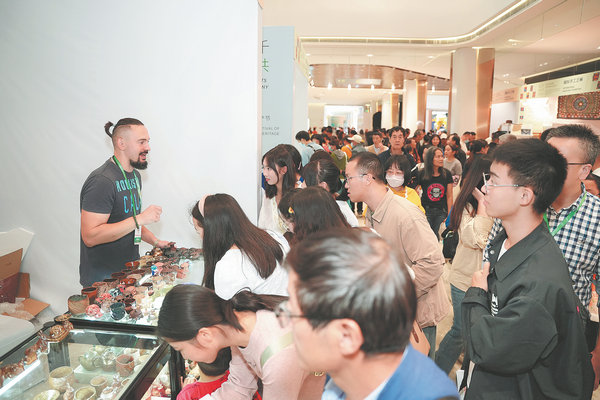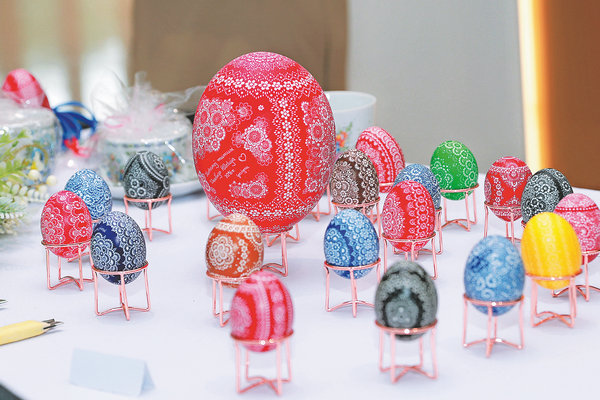

Roiko Maksym from Ukraine brought his labor of love, a rich collection of ceramics, to the International Festival of the Intangible Cultural Heritage in Chengdu, capital of southwestern China's Sichuan province, in mid-October.
They are mostly for tea rituals, ranging from cups to pots of various shapes and sizes, as well as tea pets (small figurines of ornaments) in the forms of foxes and frogs that are made of clay and favored by tea drinkers looking for good luck.
Love of tea and its surrounding culture encouraged Maksym to move to China, where he settled in Yunnan province, in the southwest of the country, six years ago.
"I learned ceramic making here on my own through (instruction) books, like how to fire it, and practiced sculpting clay," he says.
"The Chinese (ceramic making) industry is very nice, and here you can find anything you want, like a lot of kinds of clay, and express any creative ideas you have in mind," he adds.
As he got the hang of making ceramics, he has made a point of combining elements from his country into the Chinese craft that is a well-known intangible cultural heritage worldwide.

"For example, the tea pets I make are inspired by Ukraine, like forest spirits from Ukrainian mythology," Maksym says.
As he got to know more about Chinese culture during his time in China, he has introduced many local elements into his ceramic works.
For instance, because next year marks the Year of the Dragon, he has made dragon-shaped tea pets.
It was his first time participating in an exhibition with his products and he says he'd like to show the locals his country's culture through his interpretation of the Chinese craft.
Maksym is among many international artists that have integrated Chinese cultural elements with their own artworks at the international traditional handicrafts exhibition, which was hosted during the Chengdu festival.
This year marks the 20th anniversary of the UNESCO Convention for the Safeguarding of the Intangible Cultural Heritage. The theme of this year's festival was "sharing practices in compliance with the convention and deepening civilizational mutual learning".
The five-day event brought together more than 6,000 inheritors and performers who engaged in over 900 intangible cultural heritage activities from 47 countries and regions.